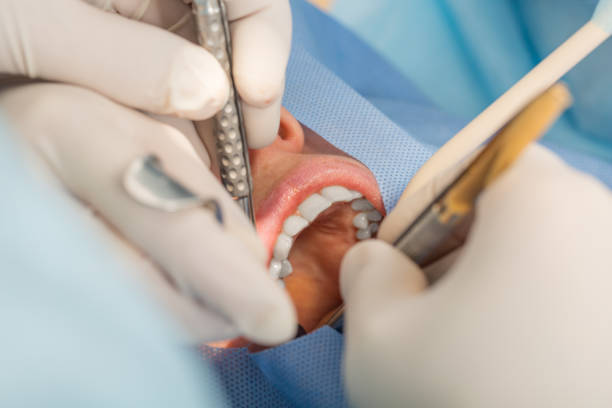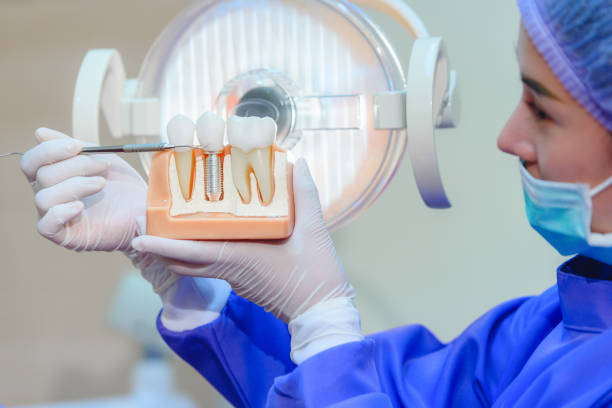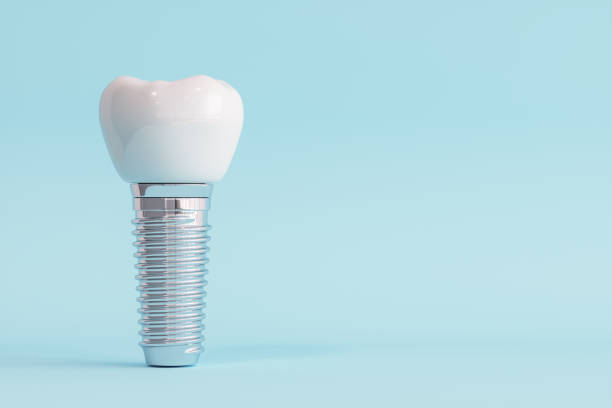By Dr. Miguel A. Estrella, DDS – TruSmile Dental Implant Center
If you’re considering dental implants, you may be wondering how long the entire process takes and what each step involves. At TruSmile Dental Implant Center, we prioritize transparency and patient education so you can approach your dental journey with confidence.
Let’s walk through a typical dental implant timeline—from your initial consultation to the moment you walk out with a restored smile.
Step 1: Initial Consultation (Week 1)
The process starts with a comprehensive evaluation. During your consultation, we:
- Take a full health history
- Perform a clinical oral exam
- Use 3D cone beam CT scans to assess jawbone density
- Review your goals and expectations
- Create a personalized treatment plan
This step is essential to determine whether you’re a good candidate for implants. Studies show that diagnostic imaging, especially CBCT, significantly improves surgical planning and implant success rates [1].
Step 2: Preparatory Procedures (Weeks 1–8, if needed)
Not everyone will need these, but if you’re lacking bone density or have infection risks, we may recommend:
- Bone grafting to strengthen the jawbone
- Tooth extraction of damaged or unsalvageable teeth
- Sinus lifts for implants in the upper jaw
Bone grafts typically require 3–6 months to fully heal before implant placement [2]. However, some patients may qualify for immediate placement if bone quality is sufficient.
Step 3: Implant Placement (Week 2 or Month 3–6)
The implant—usually a titanium post—is surgically placed into your jawbone. This outpatient procedure takes 1–2 hours and is performed under local anesthesia or sedation.
Once placed, the implant undergoes osseointegration, meaning it fuses with the bone over time to form a strong, lasting foundation [3].
Step 4: Healing and Osseointegration (3–6 Months)
Osseointegration typically takes 3–6 months depending on:
- Bone density
- Overall health
- Whether grafting was required
It’s critical not to rush this step. A successful implant is one that integrates fully with the bone—a process vital to its long-term stability [4].
During this phase, you may wear a temporary restoration for comfort and appearance.
Step 5: Abutment Placement (Month 4–7)
Once healing is complete, we place an abutment, which is the connector between the implant and the final crown. This is a minor procedure and healing typically takes just 1–2 weeks.
Some implants may come with a pre-attached abutment, allowing us to streamline the process.
Step 6: Final Restoration (Month 5–8)
Finally, we take impressions and custom-design your crown, bridge, or implant-supported denture. The restoration is crafted to match your natural teeth in color, shape, and function.
Once it’s placed, you’ll have a strong, natural-looking smile that feels completely your own.
Overall Timeline Summary
| Step | Estimated Duration |
| Consultation | 1 Day |
| Preparatory Procedures | 1–8 Weeks (or longer if grafting needed) |
| Implant Placement | 1–2 Hours |
| Osseointegration | 3–6 Months |
| Abutment + Crown | 2–4 Weeks |
Total Time: Anywhere from 4 to 9 months, depending on individual needs.
Why TruSmile?
At TruSmile Dental Implant Center, we don’t just place implants—we restore confidence and improve lives. We use advanced digital imaging and minimally invasive techniques to make every step of the process as efficient and comfortable as possible.
Final Thoughts
Understanding the dental implant timeline can help you plan your schedule and set realistic expectations. While it’s not an overnight fix, the results—long-lasting function, improved aesthetics, and renewed confidence—are well worth the wait.
References:
- Bornstein, M. M., et al. (2014). Systematic review on the accuracy of cone-beam computed tomography in implant dentistry. Clinical Oral Implants Research, 25(4), 416–431.
- Aghaloo, T. L., & Moy, P. K. (2007). Which hard tissue augmentation techniques are the most successful in furnishing bony support for implant placement? The International Journal of Oral & Maxillofacial Implants, 22(Suppl), 49–70.
- Albrektsson, T., & Wennerberg, A. (2004). Oral implant surfaces: Part 1—review focusing on topographic and chemical properties of different surfaces and in vivo responses to them. The International Journal of Prosthodontics, 17(5), 536–543.
- Esposito, M., et al. (2007). Interventions for replacing missing teeth: Different times for loading dental implants. Cochrane Database of Systematic Reviews, (2).



